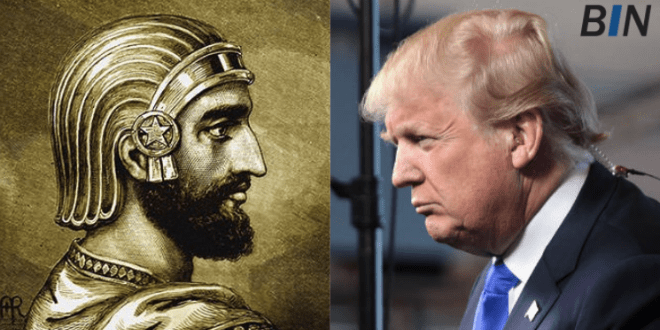Eyebrows were raised when a question about rebuilding the Beit HaMikdash (Holy Temple) was asked in the White House press briefing room on Thursday, bringing a subject usually found in Jewish study halls and prophetic discussions directly into U.S. political conversation. Mishpacha’s White House correspondent, Jake Turx, asked Press Secretary Karoline Leavitt whether President Donald Trump had ever discussed the prospect of supporting the Temple’s reconstruction in Jerusalem.
“To your knowledge, has the topic of rebuilding the Holy Temple in Jerusalem ever come up?” Turx asked, after noting Trump’s reputation for large-scale building projects and his newly revealed plans for a White House ballroom. “He’s likely gonna go down as the greatest builder of this era,” Turx said.
Leavitt pointedly did not reject the possibility that the president and real-estate tycoon would consider the project, responding, instead, “It has not. No it hasn’t. I’m sorry, Jake.”
REPORTER: Looking at these renderings, it got me thinking he’s [Trump] likely going to be remembered as the greatest builder of this era, and you’ve been part of many meetings with him. To your knowledge, has the topic of rebuilding the Holy Temple in Jerusalem ever come up?… pic.twitter.com/gUAmN55LMt
— Open Source Intel (@Osint613) October 23, 2025
The exchange was brief, but it immediately recalled one of the most symbolically potent moments of Trump’s first term: the move of the U.S. Embassy to Jerusalem in May 2018.
Some have credited Trump’s success despite overwhelming and sometimes unscrupulous opposition to his attachment to Jerusalem, as per the verse in Psalms:
“Pray for the peace of Jerusalem: “May those who love you be secure.’ Psalms 122:6
Following the embassy move, the Sanhedrin minted a ceremonial coin depicting Trump alongside the Persian King Cyrus, who facilitated the Jewish people’s return from Babylonian exile and rebuilding the Second Temple. The Prophet Isaiah explicitly calls Cyrus “Moshiach” (Messiah) for playing this role in enabling Israel to return to its land and restore worship in Jerusalem. The comparison was not marginal or obscure — it gained traction among Christian supporters of Israel and appeared in Israeli political rhetoric as well.
Prime Minister Benjamin Netanyahu publicly drew the same comparison in 2018, saying that like Cyrus, Trump “made history” by recognizing Jerusalem as Israel’s capital. The suggestion that Trump’s policies had moved the Jewish people closer to restoring sovereignty in their capital city was accepted by many of his evangelical allies and taken seriously by some Jewish Temple activists.
The idea of a Third Temple is not speculative within the Hebrew Bible. The Prophet Ezekiel dedicates eight chapters to describing a future Temple with exact architectural measurements and designated rituals.
Several years ago, mentioning the Temple in a White House briefing would have been treated as marginal. Today, it was asked plainly — without laughter, without dismissal, and without scandal.
The Bible describes Jerusalem not as a negotiable city but as the center of God’s presence and the future gathering point for all nations. Isaiah wrote:
“For My house shall be called a house of prayer for all peoples.” (Isaiah 56:7)
Whether Trump has entertained the idea is clear: he has not. But the question itself now hangs in the air. It signals that talk of the Temple has entered the realm of public policy, political identity, and international religious meaning.




